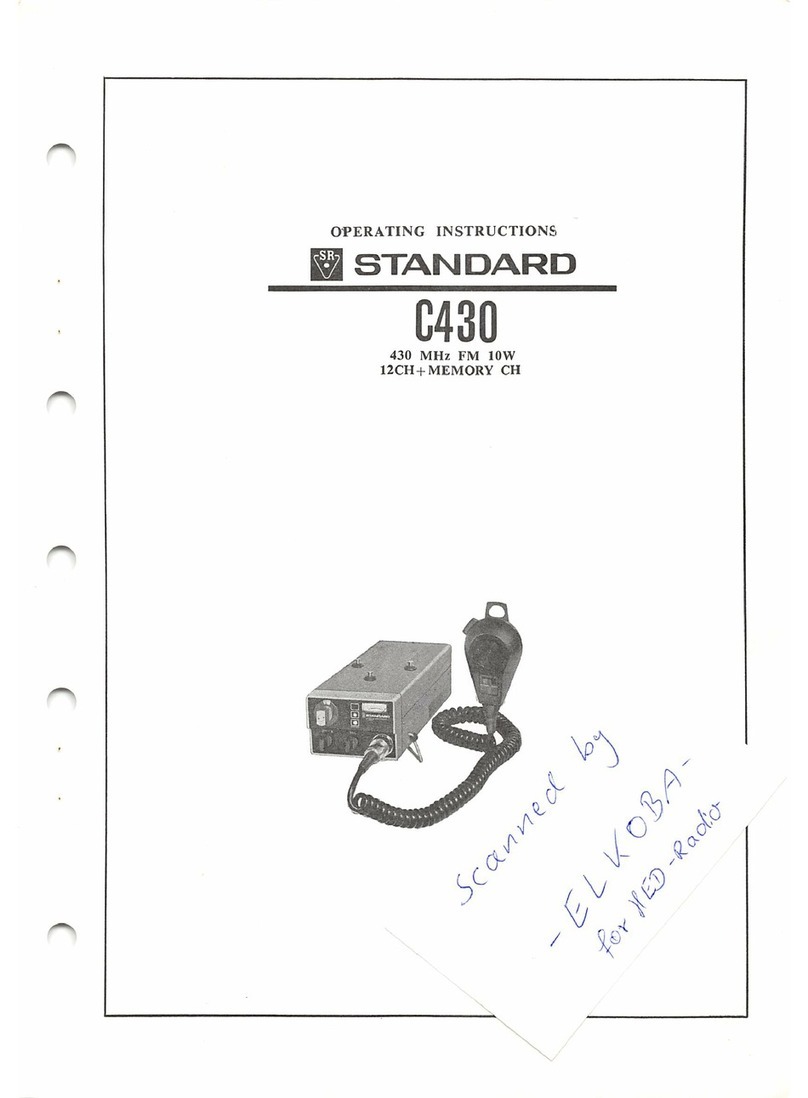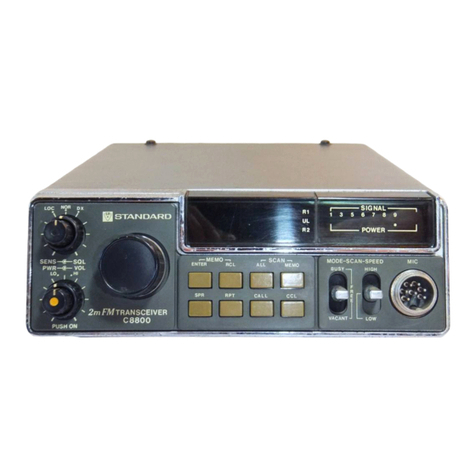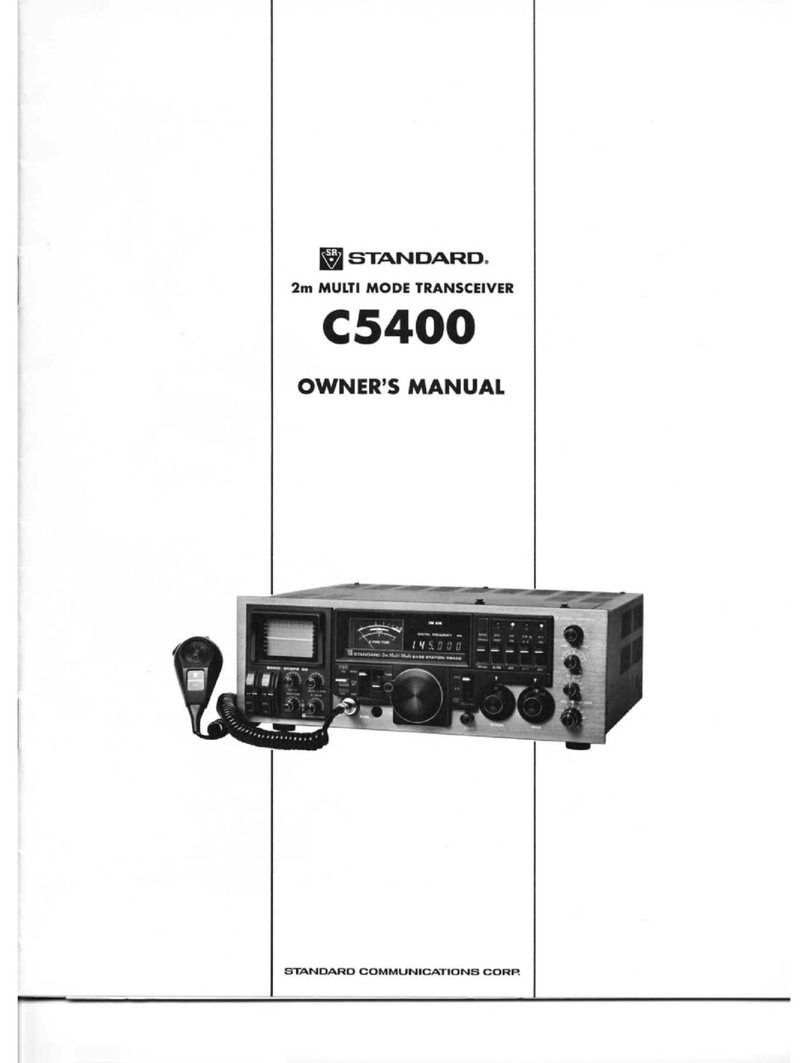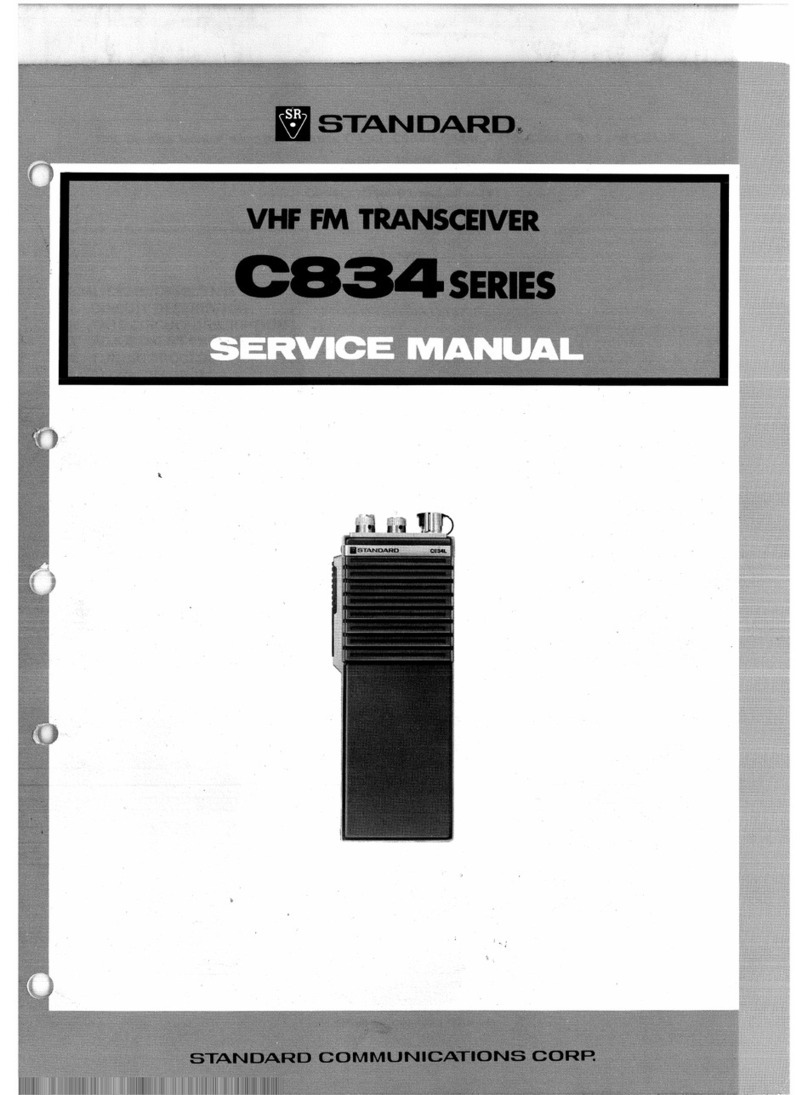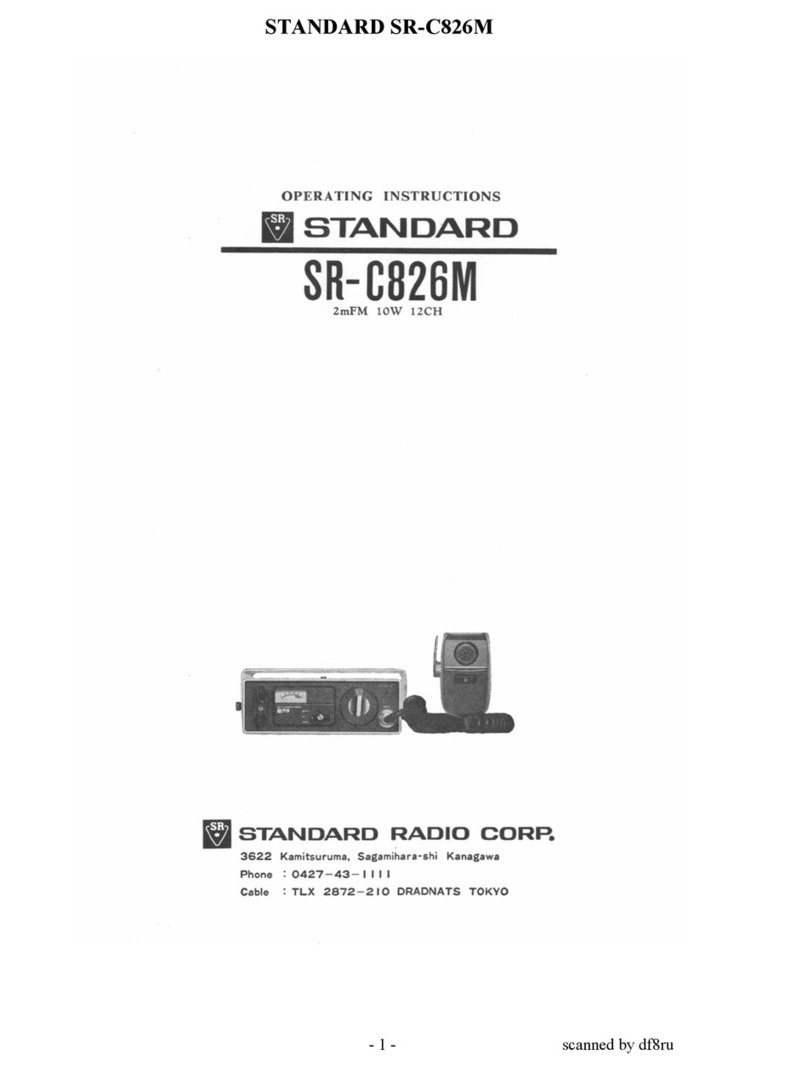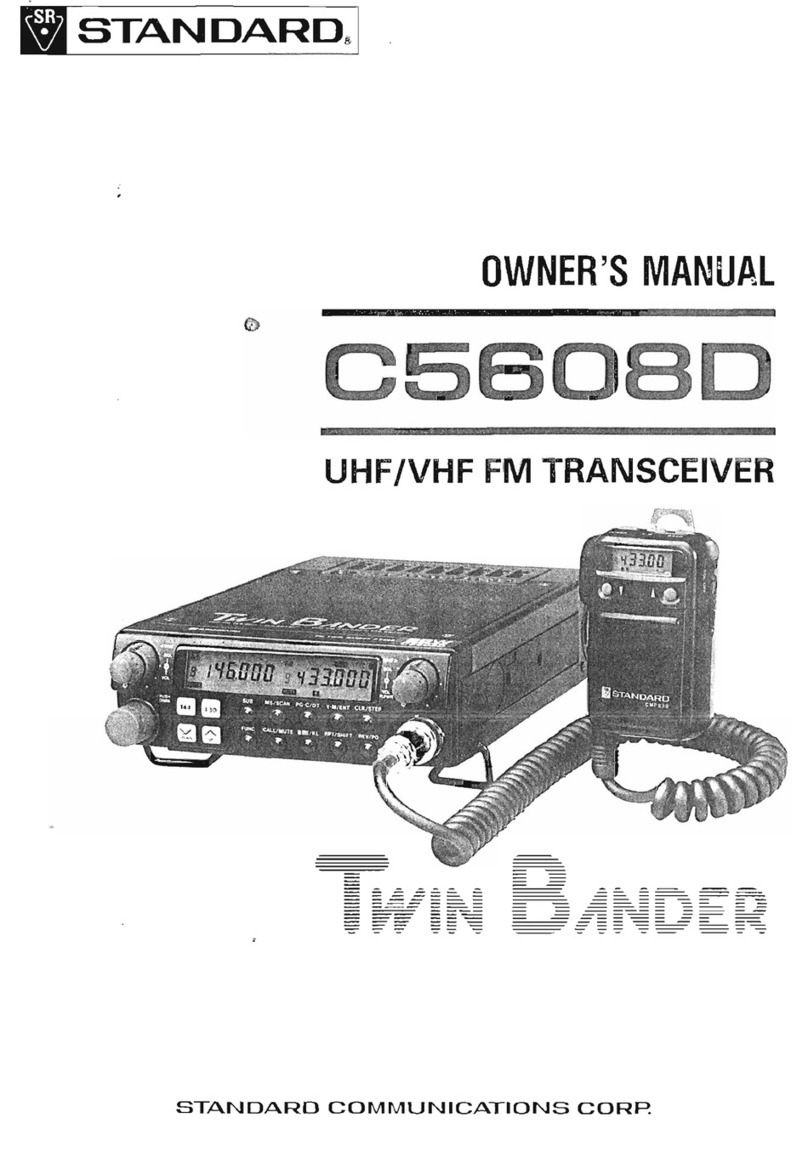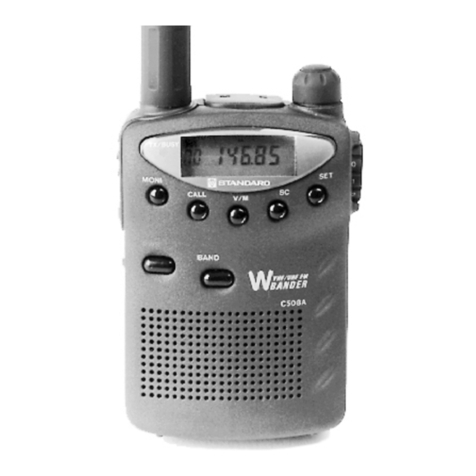Standard CV110 User manual
Other Standard Transceiver manuals
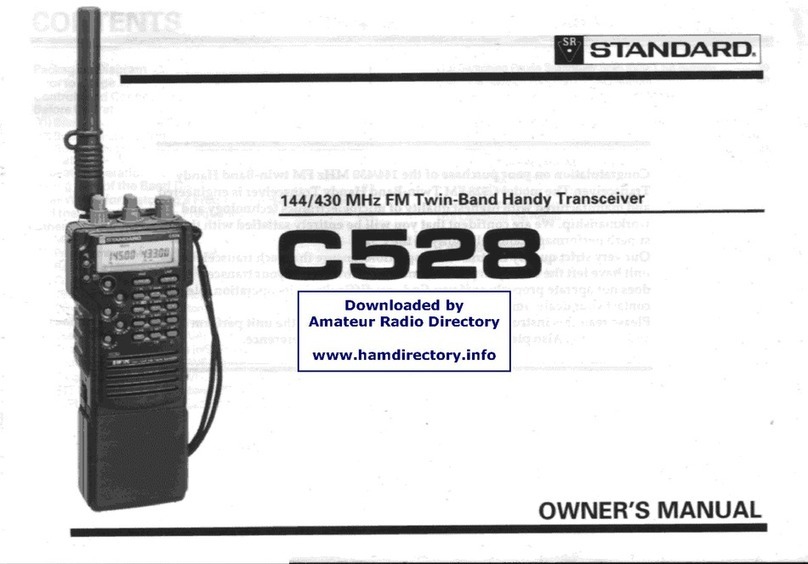
Standard
Standard C528 User manual

Standard
Standard C168 User manual
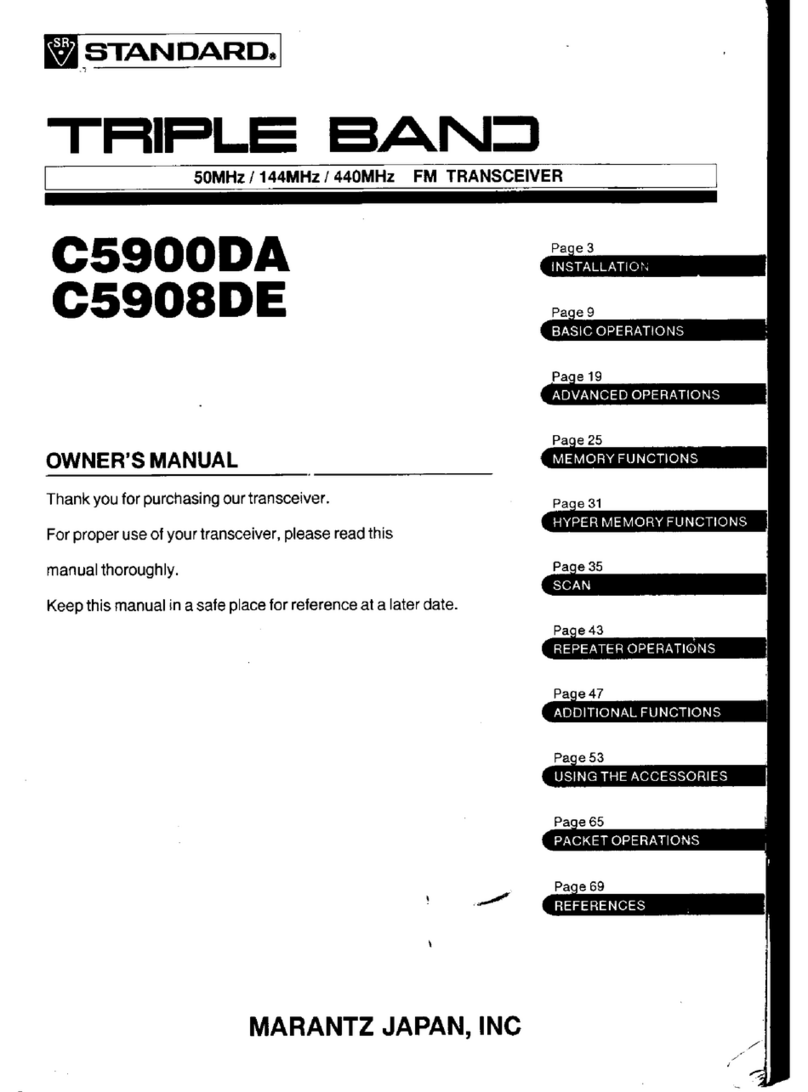
Standard
Standard G59OODA User manual
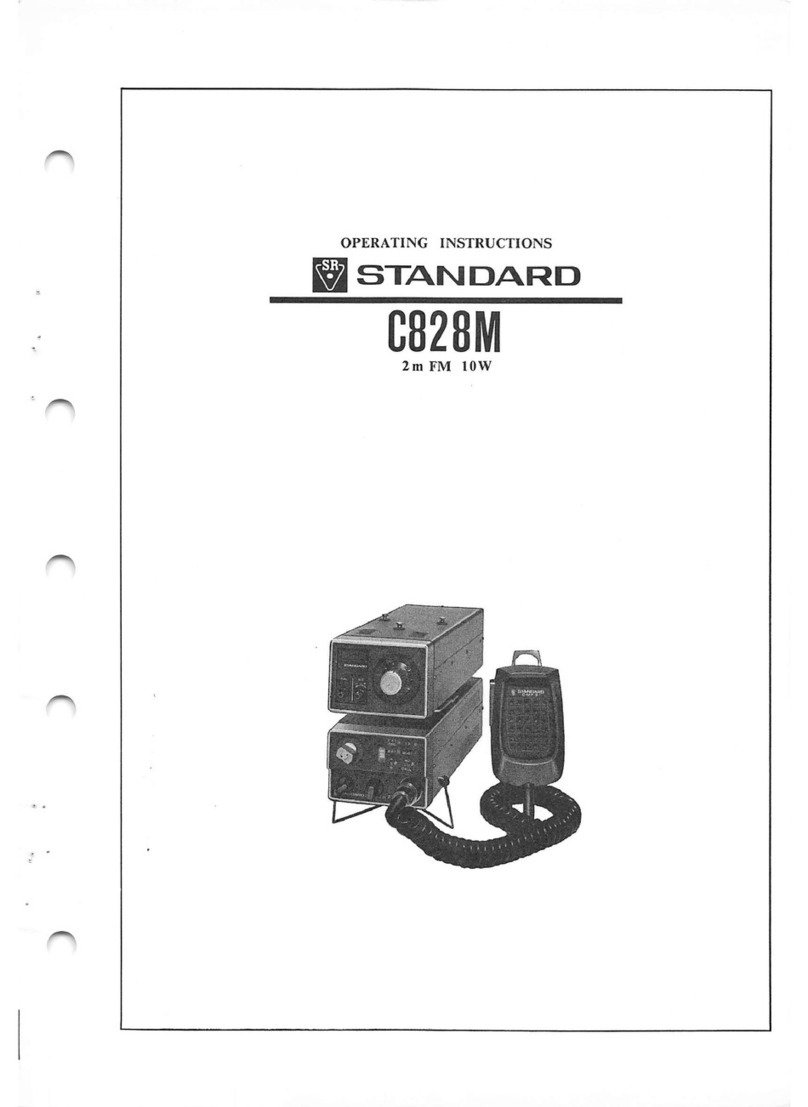
Standard
Standard C828M User manual
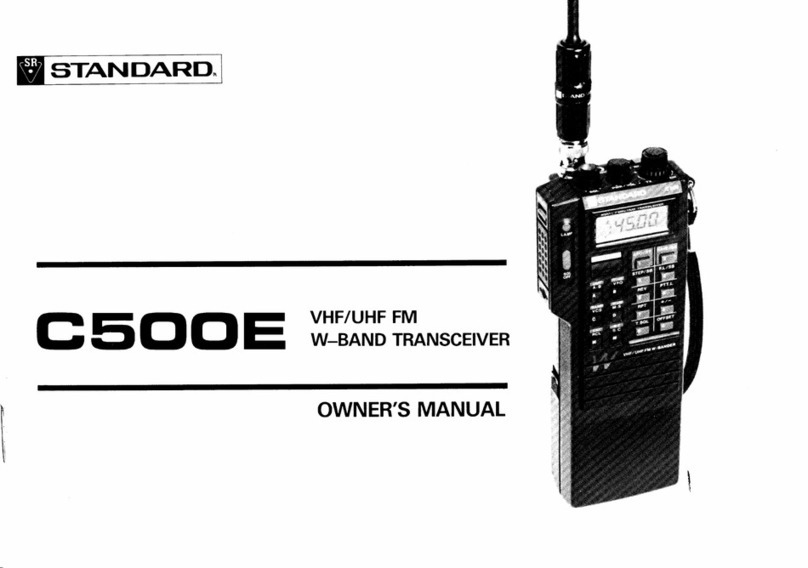
Standard
Standard C500E User manual
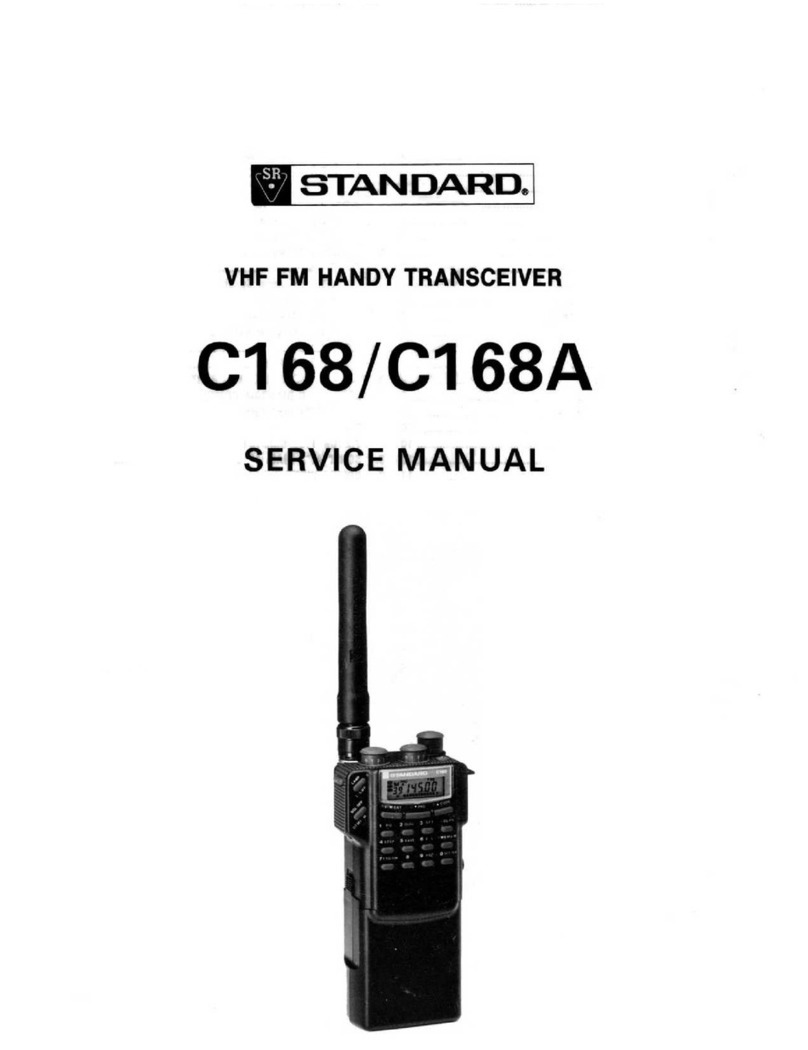
Standard
Standard C168 User manual
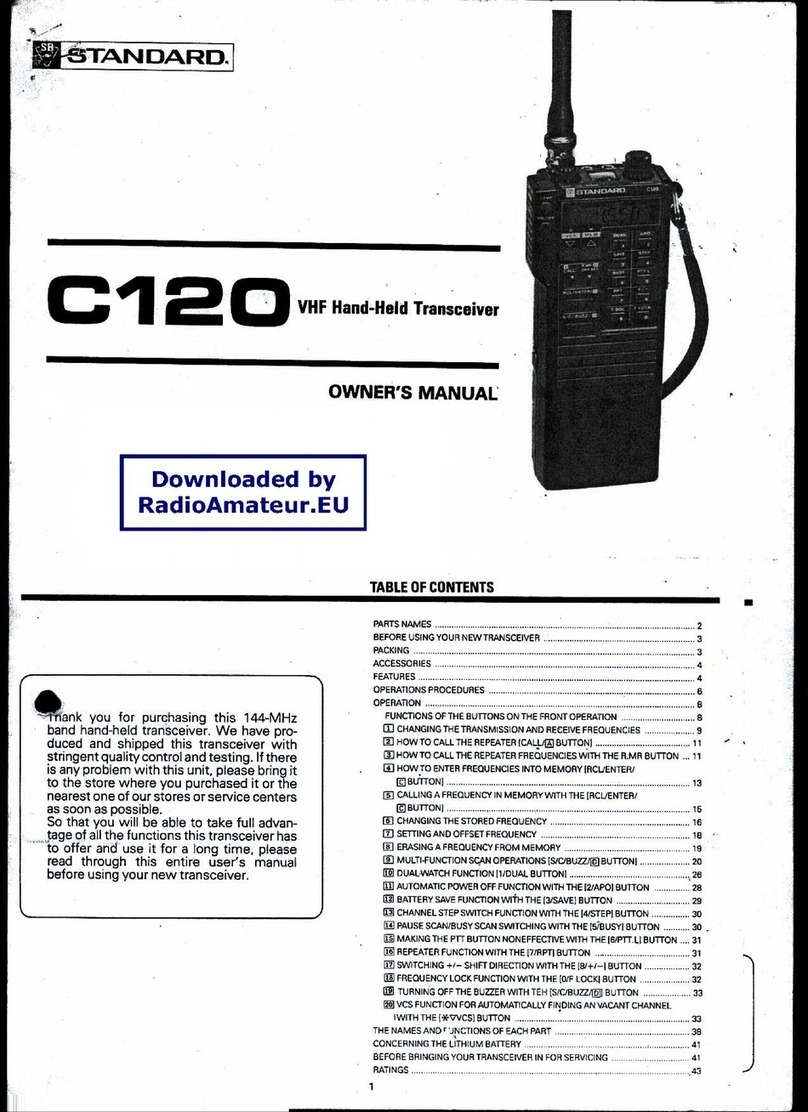
Standard
Standard C120 User manual
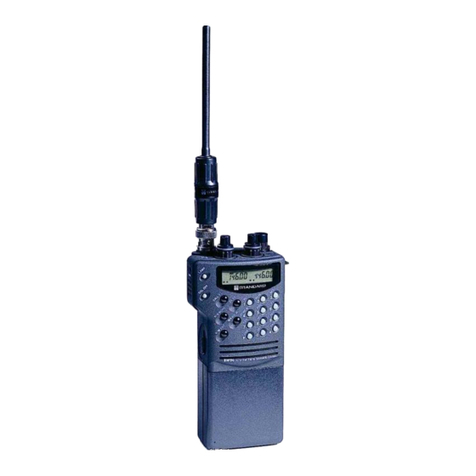
Standard
Standard C558 User manual

Standard
Standard C108 User manual
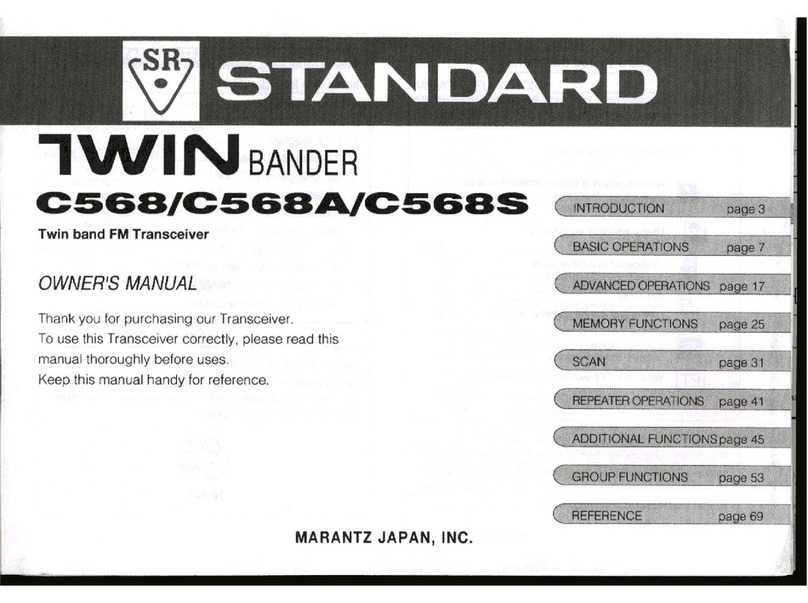
Standard
Standard TWIN C568 User manual
Popular Transceiver manuals by other brands

Kenwood
Kenwood ProTalk TK-3201 instruction manual

City Theatrical
City Theatrical SHoW DMX SHoW Baby user manual

Standart Horizont
Standart Horizont HX407 owner's manual

B&G
B&G V90S quick start guide

VictelGlobal
VictelGlobal ALK300 series Operation manual

Cactus
Cactus Wireless Flash Transceiver V6 user manual
